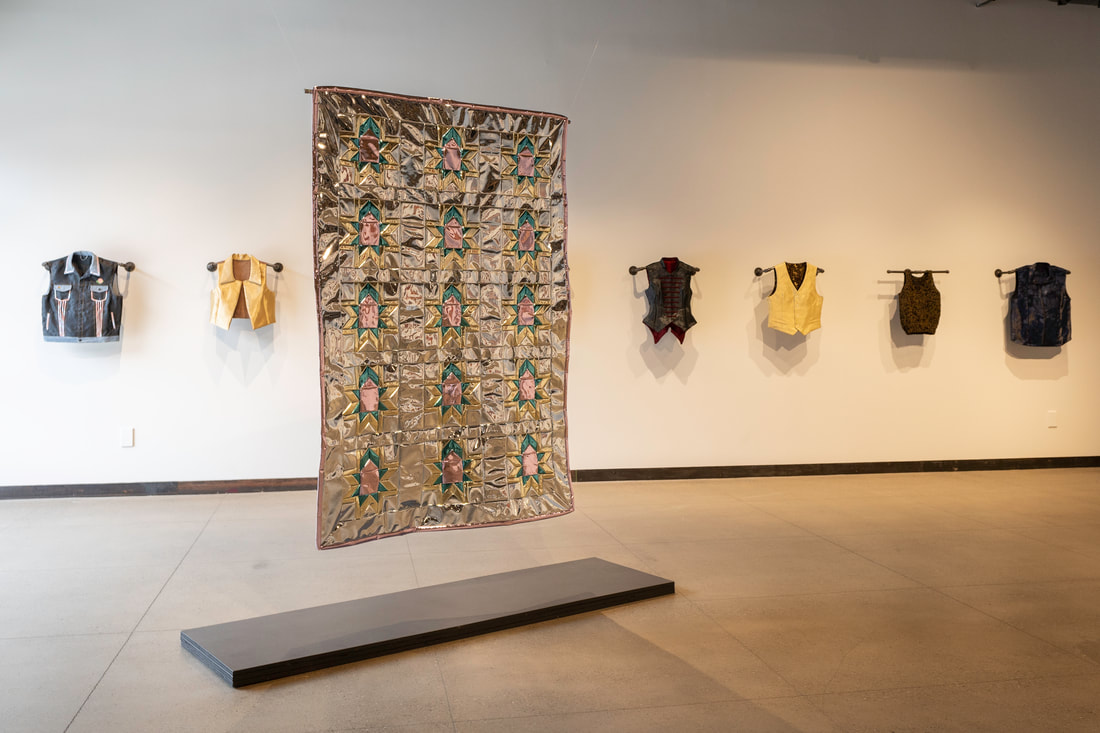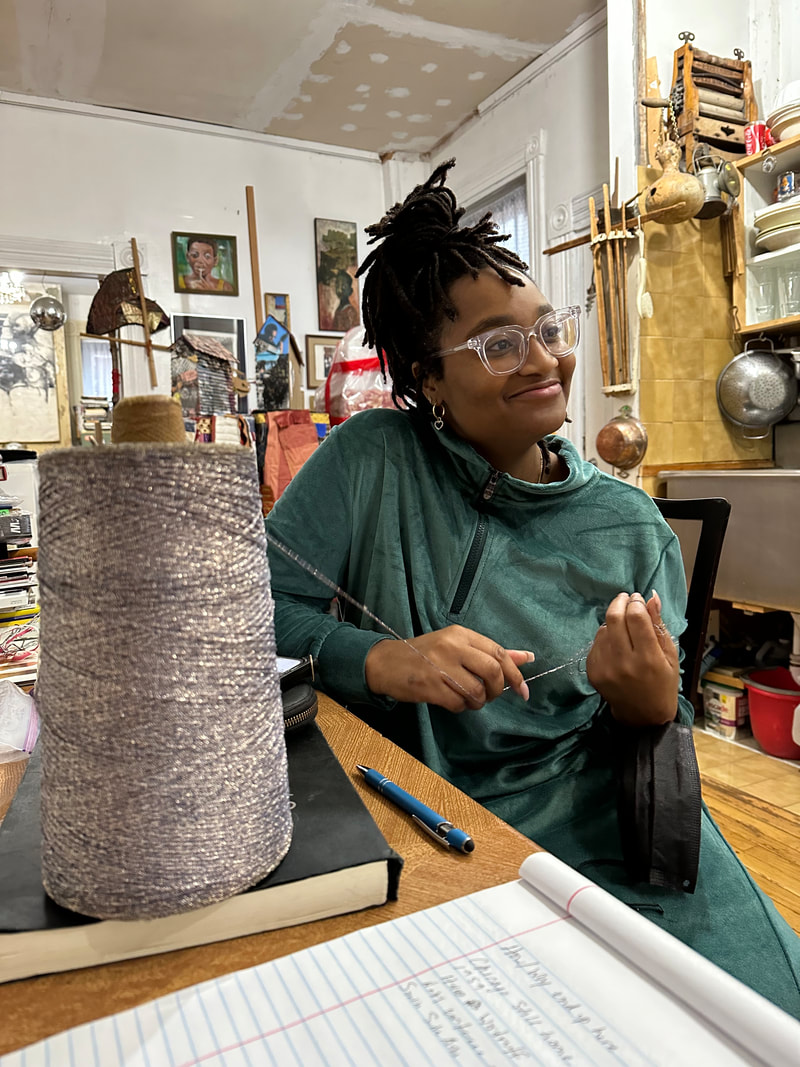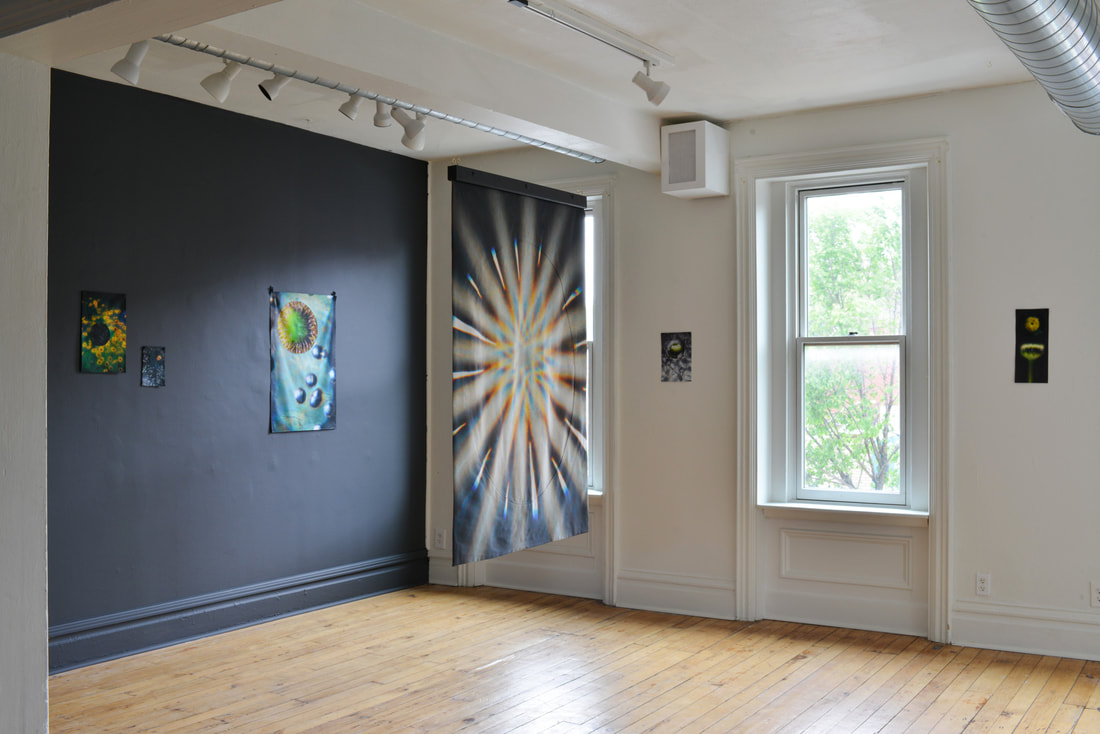2/8/23
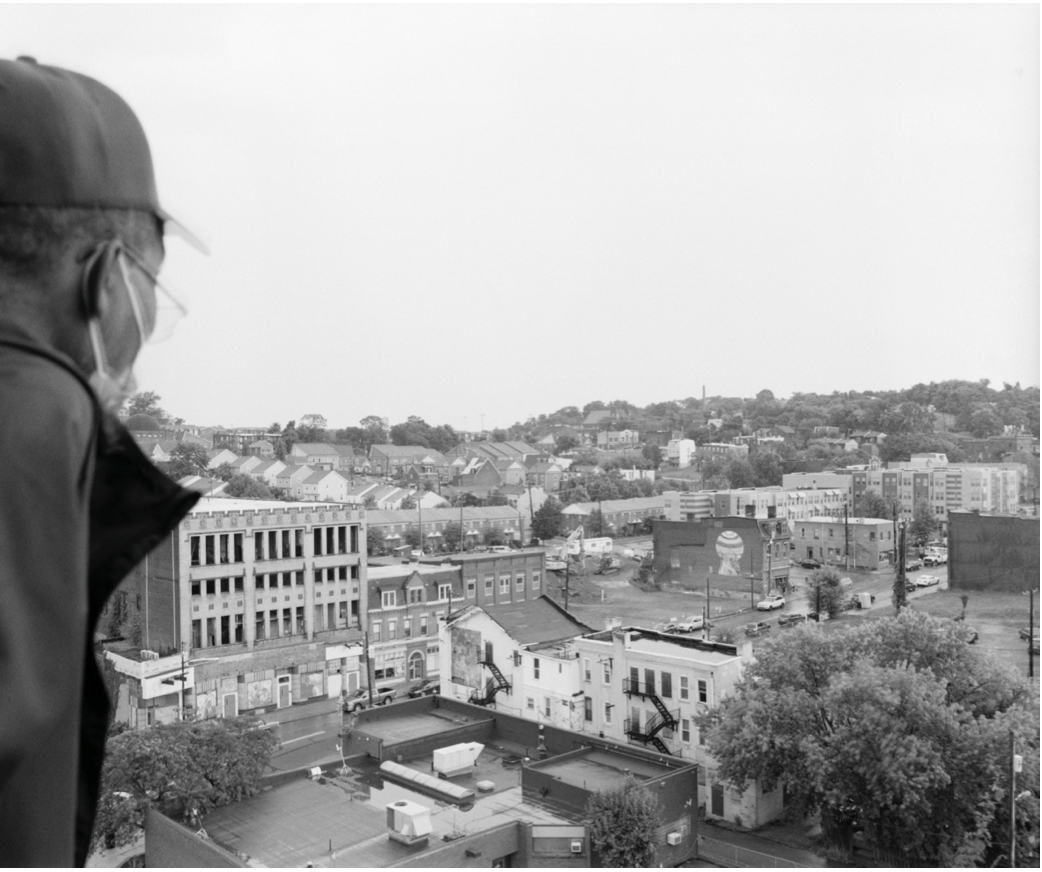
Hannah Price, James’ View of the Hill (2021)
The views and opinions expressed in this article are solely those of the author. They do not reflect the opinions or views of Bunker Projects or its members. All images courtesy of Silver Eye.
Pittsburgh, like America, is often short on love for Black folks it doesn’t find remarkable. There isn’t much love for Black people who don’t occupy positions of power, or those whose work doesn’t drive the machines that entertain this city, from sports, to music, to the arts. It’s a city that erects permanent statues of athletes who made its people feel like champions, but it is also a city that will displace thousands of residents to build a sports arena, one that would also eventually be erased. Silver Eye’s concurrent exhibitions, Still Standing (2022) by Hannah Price, and Gentle Landing (2022) by Zeal Eva, offer images in praise of survival, acknowledgment of nobility, and admiration of beauty. Portraits of everyday people and historic sites, take up space on the storied gallery’s walls, serving as a reminder that the magic often associated with Pittsburgh’s heyday is still here–you just have to notice it. Price and Zeal Eva do their part to make it visible.
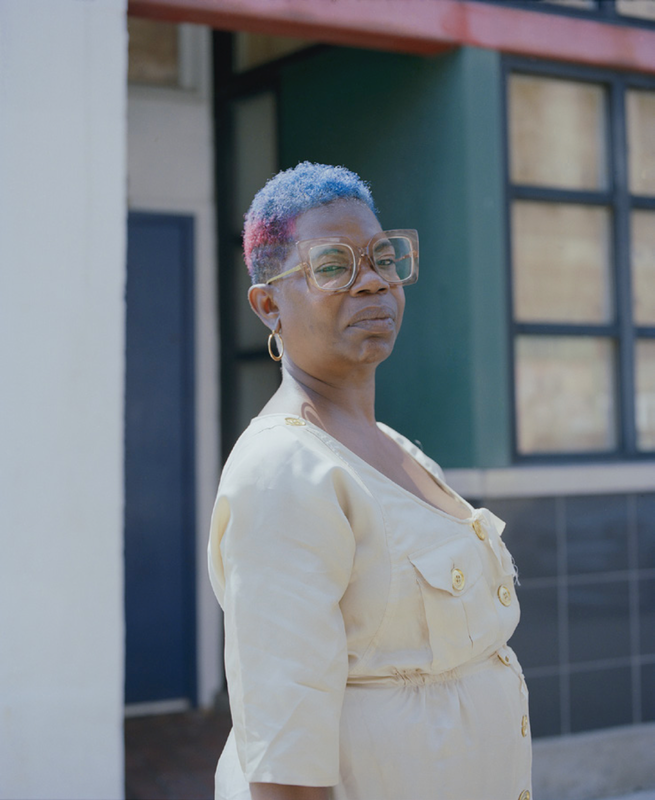
Hannah Price, Stacia (2021)
Left to right: Hannah Price, Cellar, August Wilson’s house (2021), National Negro Opera Company House (2021)
The stories of the Hill District that are most often elevated are those that reflect on what once was, or what still can be. But the stories of today are equally important and deserve to be amplified as well. While it’s imperative Pittsburgh claim its rightful place in Black history, in American history, lest it be erased, it’s also important that the past doesn’t overshadow the present. Still Standing honors those who have survived the attempts at erasure, and that which withstood the hurricanes of gentrification.
In Still Standing, photographer Price documents historic landmarks across Pittsburgh’s Hill District and Homewood, while also highlighting community members active in those areas. These sites include the Hill District’s Crawford Grill #2, The New Granada Theater, the August Wilson House, and Homewood’s The National Negro Opera Company House. In the two predominantly Black neighborhoods, these buildings were once significant incubators of Black culture, producing art that changed not only Pittsburgh, but also the world.
Occupying the main gallery at Silver Eye, there are nine images, all but one framed, wrapping around the gallery in a single row that alternates between portraits of people, and portraits of buildings. The images of people are printed at a scale that’s close to life size. While the images of buildings, printed slightly bigger, are large enough to sense their historic stature. A separate, smaller room is dedicated to three immense images of the August Wilson House, including one of its exterior, and two of its interior. The scale of the images makes it easy to imagine ourselves inside the home. The juxtaposition of people and landmarks suggest that the community is worthy of adoration and preservation like the buildings that are rightfully recognized as national historic sites.
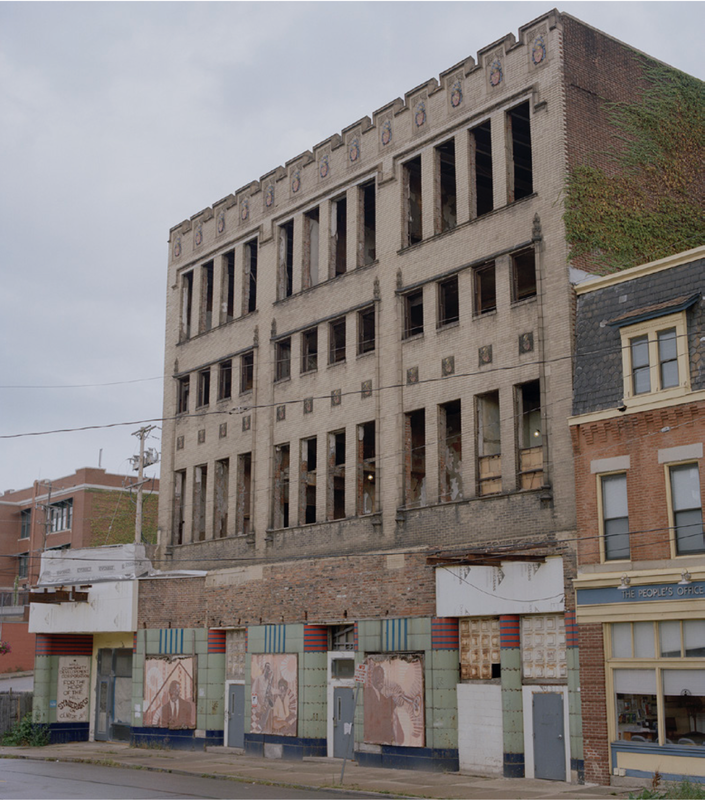
Hannah Price, The New Granada Theater (2021)
When Price encountered these buildings in the summer of 2021, all of them were closed, decades removed from being populated (August Wilson House opened as an arts center during summer 2022). The buildings no longer beckoned the world’s greatest musicians, turning them over to a packed house of folks eager to sweat out their Sunday best. The buildings were vacant, their interiors depleted, but they weren’t abandoned, and they still served a purpose. The miracle of their presence in a neighborhood where hundreds of businesses were forced to close, leave or be demolished, is a reminder of the miracle of survival. The buildings, as captured by Price, wear the neighborhood’s histories on their facade. A boarded door here, a falling panel there, a missing window up yonder… all scars of its survival. Glimpses of their interiors reveal cracked paint, deteriorated walls, and piles of rubble. Despite that, the insides of the buildings are relatively tidy, and there is evidence of care.
Care is also evident in the surrounding community. In a neighborhood where tens of thousands of residents have been forced out, one cannot take the presence of those who remain for granted. The people also deserve to be recognized as essential, immovable parts of the neighborhood’s fabric.
When a building is registered as a historic landmark, it’s a public acknowledgement of its significance, declaring gratitude for its impact. For dormant properties, the plaque tells those who are unfamiliar, that despite its appearance, despite its silence, this is a place that has an important history, and it still stands because it still tells the neighborhood’s story. It signals to anyone who thinks it should be replaced, that it isn’t going anywhere. While the term landmark usually applies to the inanimate, I would argue that it should also apply to people; in any neighborhood, there are those who are staples, those who have been there and will always be there, those who are so synonymous with it, you can identify your location based on their presence. Those who take care of their hood, those who protect it, who guard its edges and fight to never let outsiders violate their blocks. Every time you’re outside, you see them outside, watching over that which they love.

Hannah Price, Ms. Denise (2021)
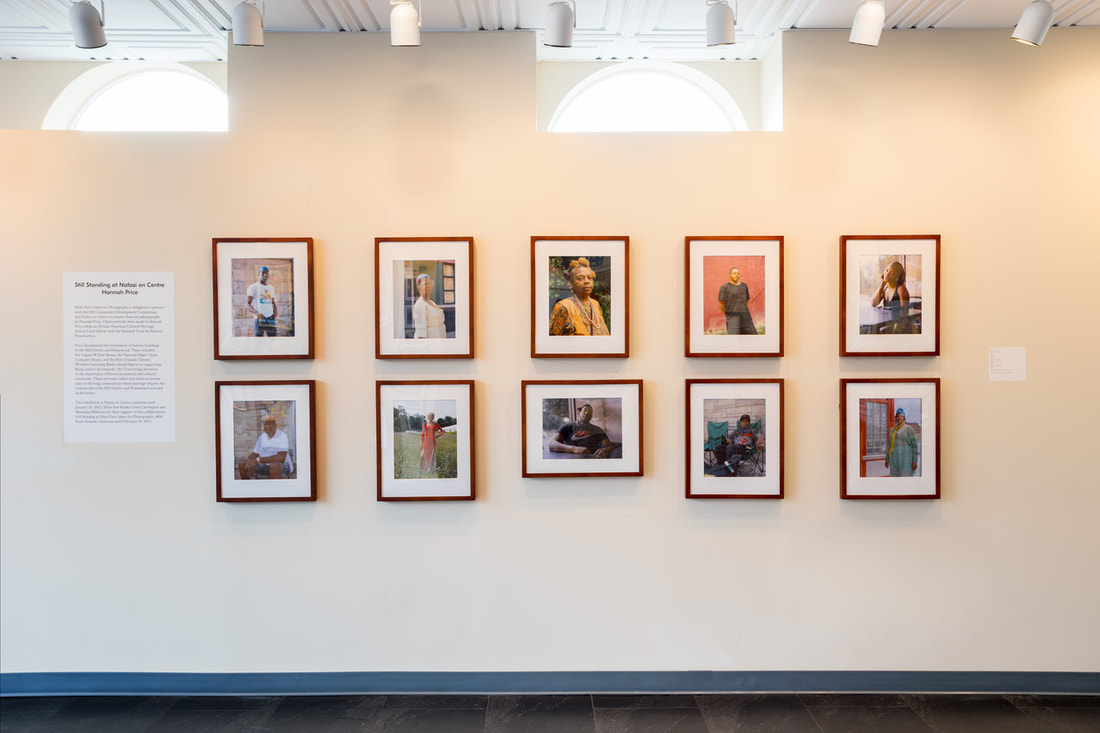
Installation view of 10 portraits by Hannah Price at Nafasi on Centre, 2021
Price also exhibited 10 portraits at Nafasi on Centre, a community gallery and artist residency in the Hill District, around which many of the images were made. Some subjects pose outside sitting comfortably or standing tall in front of familiar buildings, while others pose inside a home or in Grandma B’s, a cafe on Wylie Avenue. Price’s portraits are careful and considerate acts of praise for some of the people who make their neighborhood special.
Ms. Denise (2021) is a radiant portrait of a woman who curiously witnessed Price setting up her camera in the Hill District and asked the artist for a picture. I applaud anyone who is optimistic enough to enter the world in an outfit they’d like a photo in, should the opportunity arise. I believe self-care to be an act of optimism, an acknowledgement that there is a future in which you want to be prepared for. I admire anyone confident enough to request a photo from a stranger because they know they’re worthy of documentation. In the picture, Ms. Denise sets her gaze on the camera, her face resting as serene as the clouds that must be nestled in the sky so peacefully that the sun would rather take a day off than move them out of its way and risk waking them. Her curly hair is shaded a persian orange with highlights of silver sneaking out of their shadows, evocative of a sun’s descent. Her clothing is a similar shade of orange, with white, black and red accents, almost mirroring her sky, the way the river mirrors its sky when its sun crawls toward its twilight. Long ropes of multi-colored beads, and a set of smaller necklaces lay around her neck, reflecting the multi-colored rubber bands hugging a section of her hair that hangs from under a purple flower, just beyond a translucent orange 3 tiered bead drop earring. Everything is perfectly coordinated, in an admirable demonstration of self-care.
The Hill District is home to Pittsburgh’s highest point of elevation this side of the river, and if you believe a heaven to be in the sky, you can believe that the Hill District is the closest (this side of the river) one can get to heaven without going there. It is a blessing to be able to live where you’re from, where your people are from, and not far from where your people go. If I can no longer live with the people I love, I’ll settle for being their neighbor. I would take comfort in knowing that if I call them, they might be within earshot. I would take comfort in knowing that if I was ever in danger, they might be able to get to me quickly. I would pray that there is always space on our blocks for our people to hold them down, and I would pray that our landmarks stand so that our neighborhood is always familiar, so they can easily find me. If you have ever returned home after a few years away and noticed many of the places you knew since childhood have vanished, you understand how disorienting it can be to drive down a street you know and still feel lost because the landmark you used to use to locate yourself is absent, and the streets are empty, and nothing is the same. The only thing worse than being lost, is not being able to be found. When it’s all said and done, I want to be able to be found. Remembered, sure. But memory is for that which is too far behind to reach. Memory is for that which is no more. To still be standing is to be somewhere. And somewhere can be located.
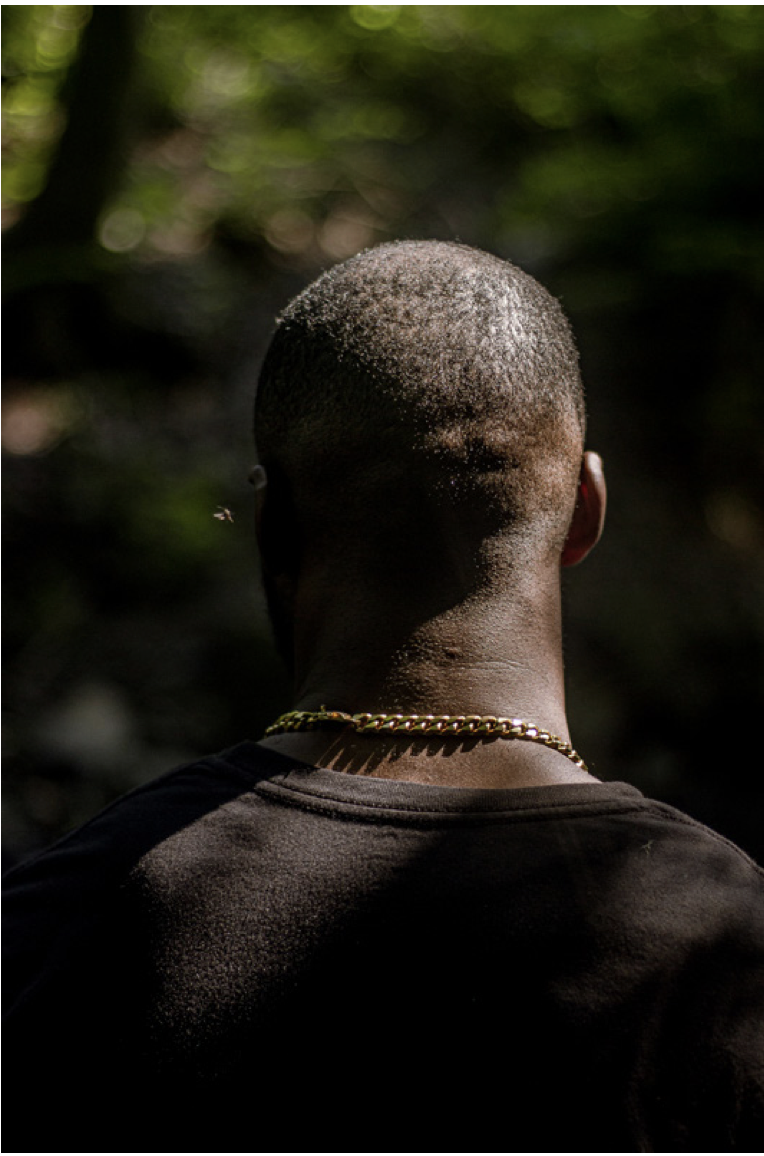
Zeal Eva, Gold Chain (Isaiah) (2020)
Zeal Eva’s Gentle Landing considers tender transitions between people and places. In a suite of six images, she intimately examines the beauty of that which we might take for granted, that which is a privilege to witness. Whereas Price situates her subject alongside landmarks, Zeal Eva situates hers alongside nature. The six matte black framed images are hung salon style, all in conversation, but there are also side-conversations happening in smaller groups of three. Gold Chain (Isaiah) (2020), September Sunset (Hill District) (2022), Jameelah (2021), and Raven (2021), Roses (2021), and View from my living room (Garfield) (2020). Shades of green, brown, peach, and gold leap from image to image, rearranging themselves, each taking their turn to lead, while the others retreat to the background. I’m drawn to the gold, who bashfully hides behind the trees in September Sunset (Hill District), before peaking out of the shadows to get a taste of shine in Gold Chain (Isaiah), before unfolding itself as a radiant backdrop behind the figure in Jameelah, giving the golden undertones in her skin the courage to appear as well. In each of the three images there is a distance that is felt, but there is also a sense of gratitude for the graceful departure of what was once close. Gratitude, also, perhaps, for the wonderful uncertainty that lies in the distance.
In Gold Chain (Isaiah), a figure stands before trees blurred in the distance, his body partially in the light. The shade from above rests on the back left of his head with the intimacy of a lover whose caress is consistent enough to tell by touch alone how many days it’s been since his last cut. Or the barber who knows the architecture of his client’s hair like he knows the back of the hand that gently guides his crown toward the optimal angle for the fade that will invite a lover’s hand to study it. A gold chain around his neck summons what little sun is available. And it is the shade here that disappears the light and hides the familiar, mercifully, so that maybe the transition to a new familiar is easier.
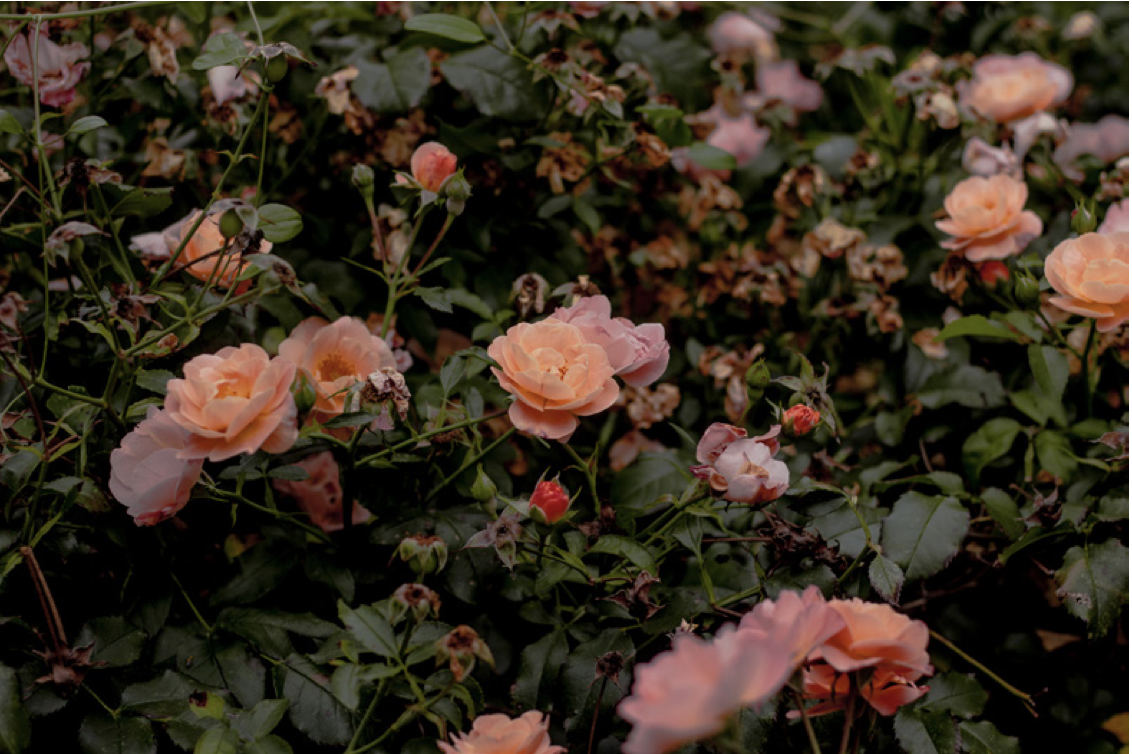
Clockwise from upper-left to bottom: Zeal Eva, Raven (2021), Jameelah (2021), Roses (2021)
In the other three images, Raven, Roses, and View from my living room (Garfield), there is also gratitude, but for that which has arrived, and for that which is blossoming.
In Raven, a woman sits on the ground on top of a clear plastic backdrop cascading from above, as the surrounding house plants bend towards her radiance. She sits relaxed with her legs bent upward, knees almost to her chest, her arms hugging the outside of her legs, while her hands reunite across her ankles. Her eye-level gaze is sincere, giving us her undivided attention. In a coral cropped tank top, light blue jeans, and bare feet, she appears at home.
In a frame below her, there’s a closeup of a garden of coral roses, embracing each other with their rich green leaves. The full bloomed among them extend their pedals as if to wave us in, to notice them, to give them our undivided attention, even if only for a moment. The shade of their tops is nearly identical to the shade of the shirt worn in Raven. I’m reminded of Stevie Wonder’s 1979 song “Come Back As a Flower” with lead vocals sung by Pittsburgh-born Syreeta Wright. In the song, Wright finds herself in awe of a garden and wishes to be a flower in the next life “to spread the sweetness of love.”
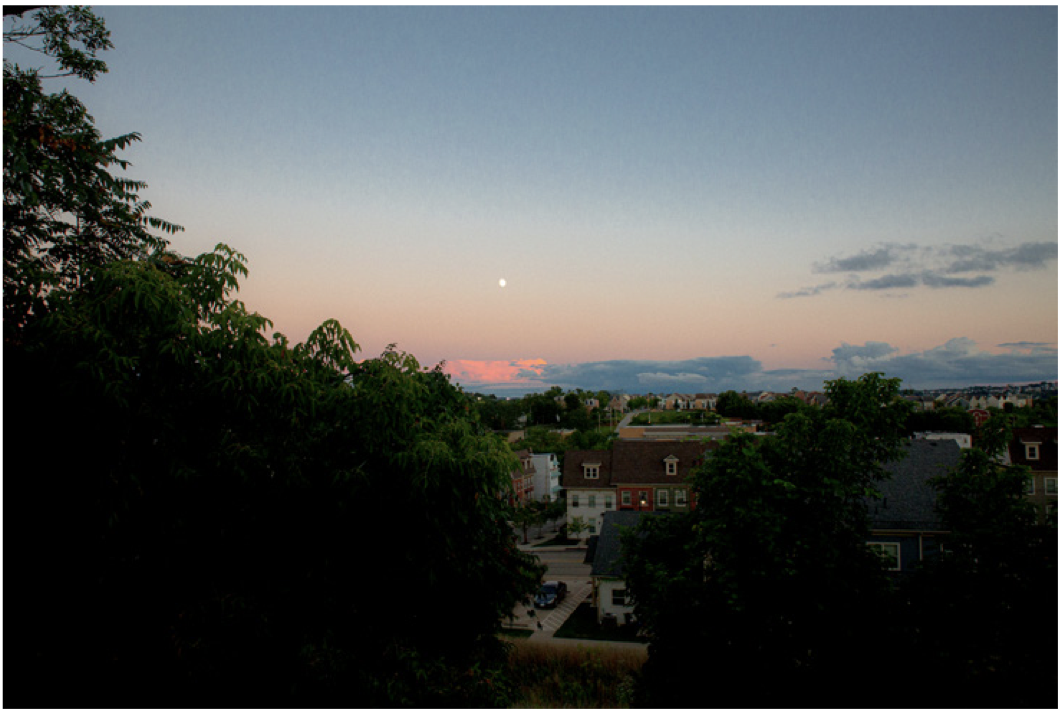
Zeal Eva, September Sunset (Hill District) (2022)
I wonder whether roses who spend their lives tethered to the soil from which they emerged ever feel unloved when people walk past as if they don’t exist, or when they’re uncared for, or when they’re entire community is violently uprooted and paved over. I would like to imagine a world in which all flowers are appreciated. I wish to recognize the consistency of our living as miraculous, the way seeing a sun set for the thousandth time can still take our breath away or move us to tears or move our phones toward the sky to take a picture to share with a bunch of people who may have already seen it anyway. They tell us to stop and smell the roses every now and then, to pause and sit with the beauty around us while we can. Because it might not always be around to see, or we might not always be around to see it. And what a shame it would be to be in the presence of a living breathing miracle and not even notice it. I would also like to imagine a world in which nobody is ignored or unnoticed or unloved, a world in which we love each other so much, that the roses who bear witness to our affection, sing of wishing to return as a person in their next life.
And I would like to imagine a world in which we see each other fully, and appreciate our beauty. And no matter how many times we encounter or pass by each other, we never stop noticing, and appreciating each other’s presence, even in the moments of departure.
Still Standing and Gentle Landing are on view at Silver Eye until February 11th, 2023.
Sean Beauford is an art enthusiast and museum worker. He can be reached at seanbeauford@gmail.com.
